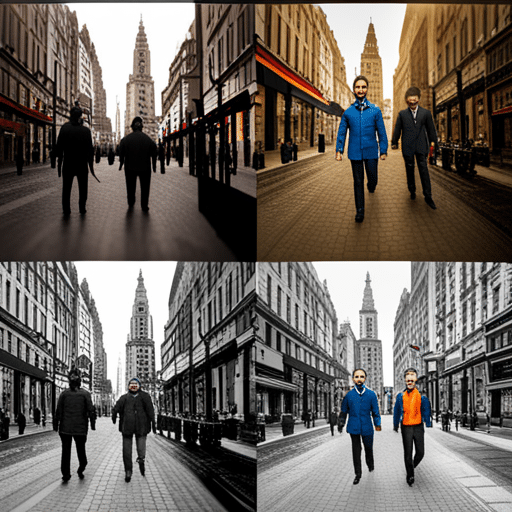Are you ready to transform your e-commerce website into a shopping paradise? With the power of optimized images, you can captivate customers and boost sales like never before.
In this article, we’ll show you how to master the art of image optimization for a seamless shopping experience. From enhancing product photography to improving loading times, we’ll provide expert techniques that will elevate your online store to new heights.
Get ready to amaze your customers and watch your profits soar!
Key Takeaways
– High-quality images and image optimization techniques are crucial for creating a seamless shopping experience online.
– Enhanced product photography, including capturing unique features and details, can influence purchase decisions.
– Utilizing alt text and metadata improves SEO, user experience, and visibility in search engine results.
– Implementing responsive design and image adaptation for mobile users ensures a seamless browsing experience.
The Importance of High-Quality Images

High-quality images are crucial for creating a seamless shopping experience online. When it comes to e-commerce, the visual aspect plays a significant role in capturing the attention of potential customers and convincing them to make a purchase.
Image resolution is an essential factor to consider in this regard. Higher-resolution images provide better clarity, allowing customers to examine products in detail and make informed decisions.
Additionally, image compression is vital for optimizing website performance without compromising image quality. By reducing file sizes through compression techniques, websites can load faster, ensuring a smooth browsing experience for users. This optimization improves customer satisfaction and positively impacts search engine rankings, as speed is a crucial ranking factor.
Therefore, investing in high-resolution images and effective compression techniques is key to enhancing the overall shopping experience on your e-commerce platform.
Image Optimization Techniques for Faster Loading Times

You can speed up loading times for your website by implementing effective image optimization techniques. By following these strategies, you can improve website performance and provide a seamless user experience for your visitors:
1. Image compression: Reduce the file size of your images without compromising quality. Use tools like JPEGmini or TinyPNG to compress images before uploading them to your website. This will significantly reduce loading times.
2. Lazy loading: Implement lazy loading to efficiently load images as users scroll down the page. This technique ensures that only the images visible on the screen are loaded initially, reducing initial page load time.
3. Responsive design: Design your website with responsive layouts so that different-sized devices receive appropriately scaled images. Displaying smaller versions of images on mobile devices helps optimize loading times and improves user experience.
Enhancing Product Photography for Increased Sales

When enhancing your product photography, remember to focus on capturing your products’ unique features and details to attract potential customers.
Product presentation plays a vital role in influencing purchase decisions. By showcasing the distinctive aspects of your items, you create compelling visual storytelling that engages and captivates your audience.
Begin by selecting the right backdrop, lighting, and angles to highlight key elements. Pay attention to composition and framing to create visually appealing images that convey a sense of quality and professionalism.
Experiment with different perspectives to showcase various angles and dimensions of your products. Consider using props or models to demonstrate how your items can be used or worn in real-life situations.
Don’t forget about post-processing techniques like color correction or retouching to ensure the images are vibrant and flawless.
Ultimately, by investing time into enhancing your product photography, you enhance the overall shopping experience for potential customers, leading to increased sales opportunities.
Utilizing Alt Text and Metadata for SEO Benefits

Utilizing alt text and metadata is essential for improving the SEO of your product photography. By implementing these strategies, you can increase your visibility in search engine results, attract more organic traffic to your website, and ultimately boost sales. Here are three key reasons why alt text and metadata should not be overlooked:
1. Alt Text Analysis: Including descriptive alt text for your images helps search engines understand what the image is about. This allows them to index and rank your images appropriately, making it easier for potential customers to find you.
2. Optimizing Image File Names: Renaming your image files with relevant keywords can positively impact your SEO efforts. Search engines use file names as additional signals when determining the content of an image.
3. Improved User Experience: Alt text and metadata provide valuable information to visually impaired users who rely on screen readers or other assistive technologies to navigate websites.
By optimizing alt text and metadata, you can enhance both the visibility of your product imagery and the overall user experience on your e-commerce site.
Now let’s dive into another important aspect of optimizing e-commerce images: responsive design and image adaptation for mobile users…
Responsive Design and Image Adaptation for Mobile Users

To ensure a smooth browsing experience on mobile devices, it’s important to implement responsive design and adapt your images accordingly.
With the increasing number of people accessing websites through their smartphones and tablets, optimizing your e-commerce images for mobile users is crucial. Responsive design allows your website to automatically adjust its layout based on the screen size of the device being used. This ensures that your images are displayed properly without any distortion or loss of quality.
In addition to responsive design, image compression is also essential for improving the mobile user experience. Compressing your images reduces their file size without compromising too much on quality, resulting in faster loading times and smoother browsing for mobile users.

